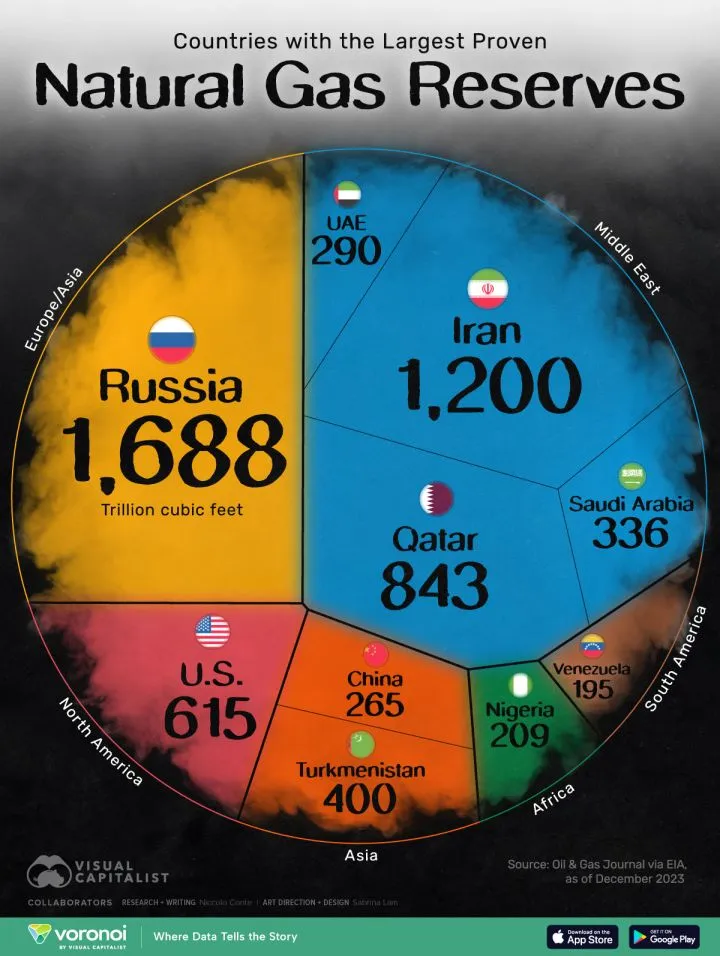Ranked: The World’s Top Countries by Natural Gas Reserves


Natural gas plays a critical role in the global energy mix, used widely for electricity generation, heating, and as industrial feedstock.
This graphic visualizes the top 10 countries with the largest proven natural gas reserves in the world. Countries are organized and colored by region,
Reserves indicates that these stores of natural gas are economically viable to extract at the current market price. Data comes from the Oil & Gas Journal via the U.S. Energy Information Administration.
Which Country Has the Most Natural Gas Reserves?
Below, we show the top 10 countries with the largest proven natural gas reserves in the world, and the size of their reserves in trillions of cubic feet.
| 🇷🇺 Russia | 1,688 | Europe/Asia |
| 🇮🇷 Iran | 1,200 | Middle East |
| 🇶🇦 Qatar | 843 | Middle East |
| 🇺🇸 United States | 615 | North America |
| 🇹🇲 Turkmenistan | 400 | Asia |
| 🇸🇦 Saudi Arabia | 336 | Middle East |
| 🇦🇪 United Arab Emirates | 290 | Middle East |
| 🇨🇳 China | 265 | Asia |
| 🇳🇬 Nigeria | 209 | Africa |
| 🇻🇪 Venezuela | 195 | South America |
At 1,688 trillion cubic feet, Russia holds the largest proven natural gas reserves in the world. They hold 40% more gas than Iran and nearly three times the United States.
The top three countries, Russia, Iran, and Qatar, comprise 51% of global proven natural gas reserves-3.7 quadrillion cubic feet out of an estimated 7.3 quadrillion worldwide. These top three countries have remained the same since 2023.
Overall, these top 10 countries shown account for 83%, or over four-fifths of global reserves.
Since Russia’s invasion of Ukraine, natural gas has become a major geopolitical flashpoint.
Europe, once heavily reliant on Russian gas, has since scrambled to diversify its energy sources and build LNG import infrastructure.
Meanwhile, global demand remains strong, with natural gas seen by some as a transitional fuel in the shift away from coal and oil.





